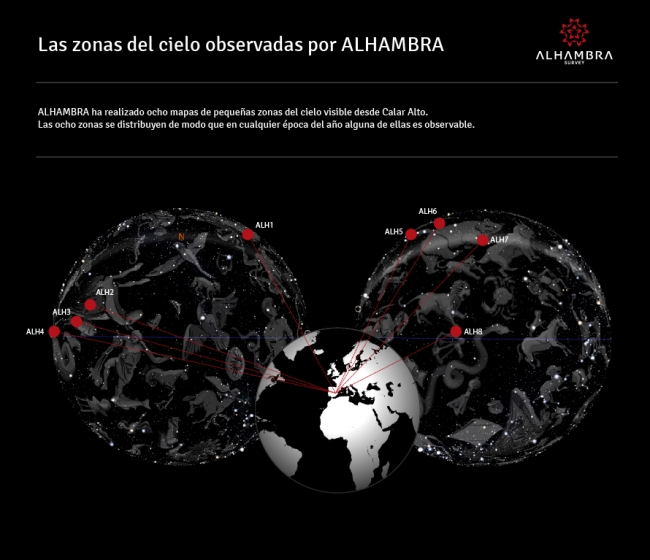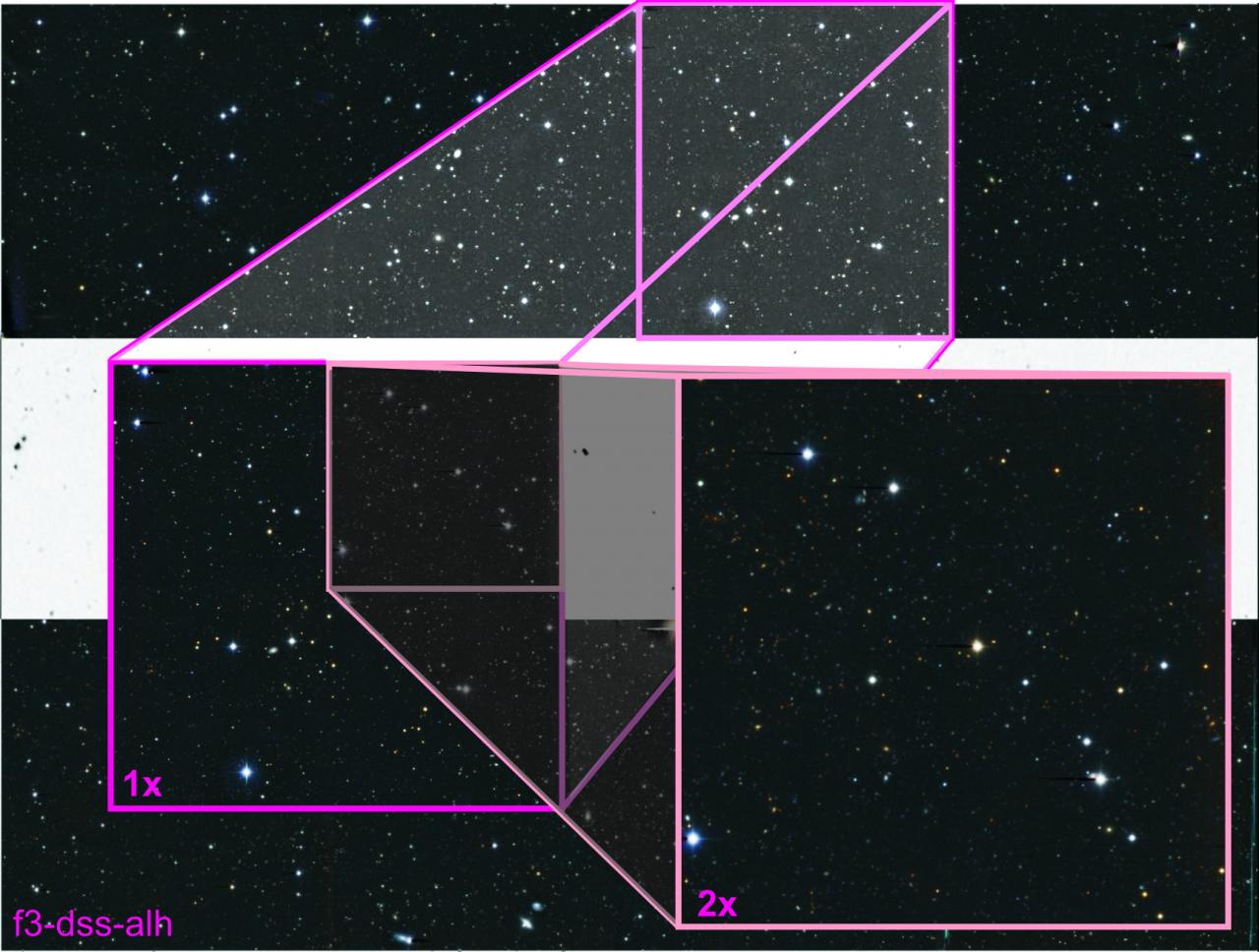Ten billion years of cosmic evolution within arm’s reach
Developed at the Calar Alto Observatory, ALHAMBRA has identified, classified and calculated the distance of more than half a million galaxies distributed in eight different celestial regions
Developed at the Calar Alto Observatory, ALHAMBRA has identified, classified and calculated the distance of more than half a million galaxies distributed in eight different celestial regions
After seven years of detailed observations of the universe from the Calar Alto Observatory (CAHA, Almería), using a technique that breaks the energy from the stars into colors by means of astronomical filters, ALHAMBRA has been able not only to identify and classify over half a million galaxies but also to calculate the distances that separate them from us with astonishing precision. As a result, the ALHAMBRA survey has made it possible to put together the most realistic three-dimensional picture of the universe to date. This will be presented tomorrow at 13h00 at the Alhambra in Granada (Internet broadcast at www.sonovoz.com).
The ALHAMBRA survey is an ambitious project that has mobilized researchers from sixteen institutions around the world. Led by Mariano Moles (CEFCA) and first conceived in the Institute of Astrophysics of Andalusia (IAA-CSIC), it was designed to trace the evolution of the universe during the last ten billion years.

"ALHAMBRA represents a decisive step toward tackling pressing problems of cosmology and astrophysics through photometric surveys which yield levels of precision high enough to measure the distance of the detected objects,” says Mariano Moles (CEFCA), head researcher at ALHAMBRA. “The accuracy of these surveys makes it possible to obtain relevant data for every cosmic scale, and in that sense ALHAMBRA is a precursor of new, long range surveys that are starting to be proposed,” he adds.
A SURVEY APPLICABLE TO EVERY SCALE
The picture of the universe that ALHAMBRA contributes will allow the study of change in stellar content of galaxies over time, that is, to learn how, when and to what extent they have aged. It will likewise make it possible to establish a clear-cut relation between morphology, stellar content and the age of galaxies, thereby to finally determine the physical processes that govern stars at that scale.
ALHAMBRA will make it possible to reflect on how galaxies are distributed in the universe. "For the past thirteen billion years, gravity has been responsible for the formation of structures like galaxies and stars,” says Alberto Molino, researcher at the Institute of Astrophysics of Andalusia (IAA-CSIC) and a member of the ALHAMBRA team. "Studying how galaxies are distributed allows us to understand the physical properties that governed the universe in previous epochs. Something like deducing the place and conditions under which the seeds in a forest were planted from the trees that we see today,” he adds.
The data collected have crossed enormous regions of our own galaxy to reach ALHAMBRA. Making a census of stars from the galactic halo, discovering variable stars, finding out which stars become bonded or identifying stars that are likely to host other planets will also allow us to explore the cosmic history of the Milky Way.
500.000 galaxies within everybody’s reach
Publication of the data will mean free access to ALHAMBRA’S potential not only for the international scientific community but to universities, scientific museums, astronomical societies and professional unions around the world.

ALHAMBRA web page offers an interactive sky map to zoom desired regions of the sample. http://alhambrasurvey.com/divulgacion.php
The scientific legacy of ALHAMBRA will make this Spanish project an international point of reference for the study of the properties of galaxies and will, moreover, serve to drive future generations of surveys such as JPAS, which will extend the work of ALHAMBRA from a few parcels of the sky to the entire observable universe.
Finally, ALHAMBRA will have served to underline once more the decisive role of Spanish astronomical observatories. Calar Alto Observatory has proved to be an indispensable tool, able to provide today’s most accurate and representative picture of what our universe looks like.
"It is fair to recognize and be thankful for the efforts and competence of the Calar Alto staff through all these years, which allowed the data of the ALHAMBRA to be obtained in the best possible conditions,” says Mariano Moles (CEFCA).
The ALHAMBRA data are available and freely accessible on the Spanish Virtual Observatory (CAB-INTA/CSIC).
Web pag of the project: www.alhambrasurvey.com
Virtual observatory data: http://svo2.cab.inta-csic.es/vocats/alhambra
ALHAMBRA in the Alhambra: http://alhambra2013.iaa.es/
Contact: Alberto Molino, amb@iaa.es 958230626 // 603570590
COMUNICATION - Andalusia Institute of Astrophysics: Silbia López de Lacalle, sll@iaa.es 95823053
